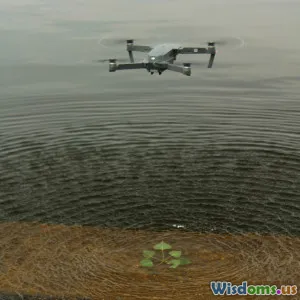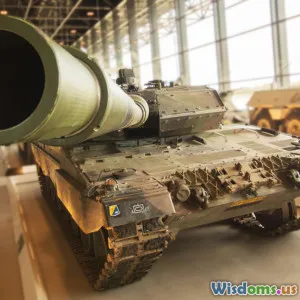
Understanding Military Innovations
6 min read Explore the evolution and impact of military innovations shaping modern warfare. (0 Reviews)
Understanding Military Innovations
Military innovations have historically played a critical role in shaping the dynamics of warfare and national security. From the invention of gunpowder to the development of nuclear weapons, each leap in technology has transformed how wars are fought and won. In recent years, advancements in technology have accelerated, leading to significant changes in military strategy, operations, and capabilities. This article explores the various facets of military innovations, focusing on emerging technologies and their implications for the future of warfare.
The Evolution of Military Technology
Military technology has evolved through several key phases:
-
Industrial Revolution: The 19th century saw the introduction of mass production techniques, which enabled the creation of more sophisticated weaponry. The steam engine, for instance, revolutionized naval warfare by allowing for faster and more maneuverable ships.
-
World Wars: The two World Wars catalyzed rapid advancements in technology. The introduction of tanks, aircraft, and radar changed the face of battle. During World War II, developments like the atomic bomb showcased the devastating potential of military technology.
-
Cold War Era: The Cold War led to a space race and advancements in missile technology, espionage, and nuclear arms. This period also saw the birth of computer technology, which would later revolutionize military operations.
-
Information Age: In recent decades, the rise of information technology has led to the digitization of warfare. Cybersecurity, unmanned aerial vehicles (UAVs), and advanced communication systems have become integral to modern military strategy.
Emerging Technologies in Military Innovations
1. Artificial Intelligence (AI)
AI is at the forefront of military innovation, providing enhanced decision-making capabilities, predictive analytics, and autonomous systems. AI can analyze vast amounts of data quickly, improving intelligence gathering and situational awareness. For example, AI-driven drones can conduct surveillance and reconnaissance missions with minimal human intervention, allowing for real-time analysis of enemy movements.
2. Robotics and Autonomous Systems
Robotic technologies, including UAVs and unmanned ground vehicles (UGVs), are transforming the battlefield. These systems can perform dangerous tasks such as bomb disposal or surveillance in hostile environments without risking human lives. The U.S. military has increasingly integrated drones into its operations, providing a strategic advantage through enhanced reconnaissance and precision strikes.
3. Cyber Warfare
As societies become more interconnected, cyber warfare has emerged as a critical component of modern military strategy. Cyberattacks can disrupt communications, steal sensitive information, and even disable critical infrastructure. Nations are investing heavily in cybersecurity measures to protect against these threats, leading to the development of offensive cyber capabilities as well.
4. Directed Energy Weapons
Directed energy weapons, such as lasers and high-powered microwaves, represent a new frontier in military technology. These weapons can disable or destroy targets with precision and speed, providing a cost-effective alternative to conventional munitions. The U.S. Navy, for instance, has tested laser systems on ships to target drones and small boats, demonstrating their potential for future combat scenarios.
5. Biotechnology and Human Enhancement
Biotechnology is also playing a role in military innovations, particularly in enhancing soldier performance. Research into genetic modifications, advanced prosthetics, and cognitive enhancers aims to improve physical capabilities and resilience, potentially giving soldiers a significant advantage on the battlefield.
Implications for Future Warfare
The innovations discussed not only reshape military capabilities but also have profound implications for global security. As nations invest in these technologies, the landscape of warfare is changing, raising ethical and strategic questions. For instance, the use of AI in combat raises concerns about accountability and the potential for unintended consequences. Similarly, the rise of cyber warfare necessitates new defense strategies to protect against increasingly sophisticated attacks.
Furthermore, these advancements can lead to an arms race, with nations striving to outpace one another in technological capabilities. This dynamic can increase tensions and create new challenges for international relations.
Conclusion
Understanding military innovations is crucial for comprehending the future of warfare and global security. As technology continues to evolve, its integration into military strategy will shape the nature of conflicts for years to come. Nations must navigate the challenges and opportunities presented by these advancements, balancing the pursuit of technological superiority with the need for ethical considerations and international stability. By staying informed about these trends, individuals can better understand the complexities of modern warfare and the role that technology plays in shaping the future of defense.
Rate the Post
User Reviews
Popular Posts




















